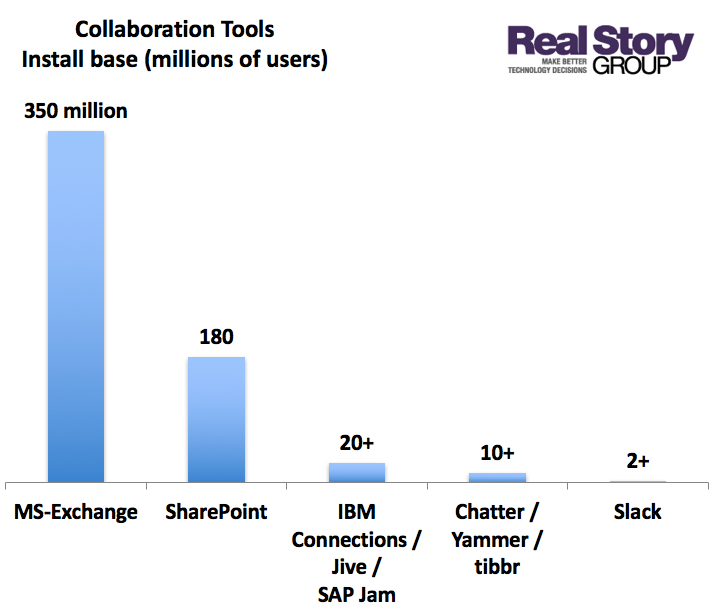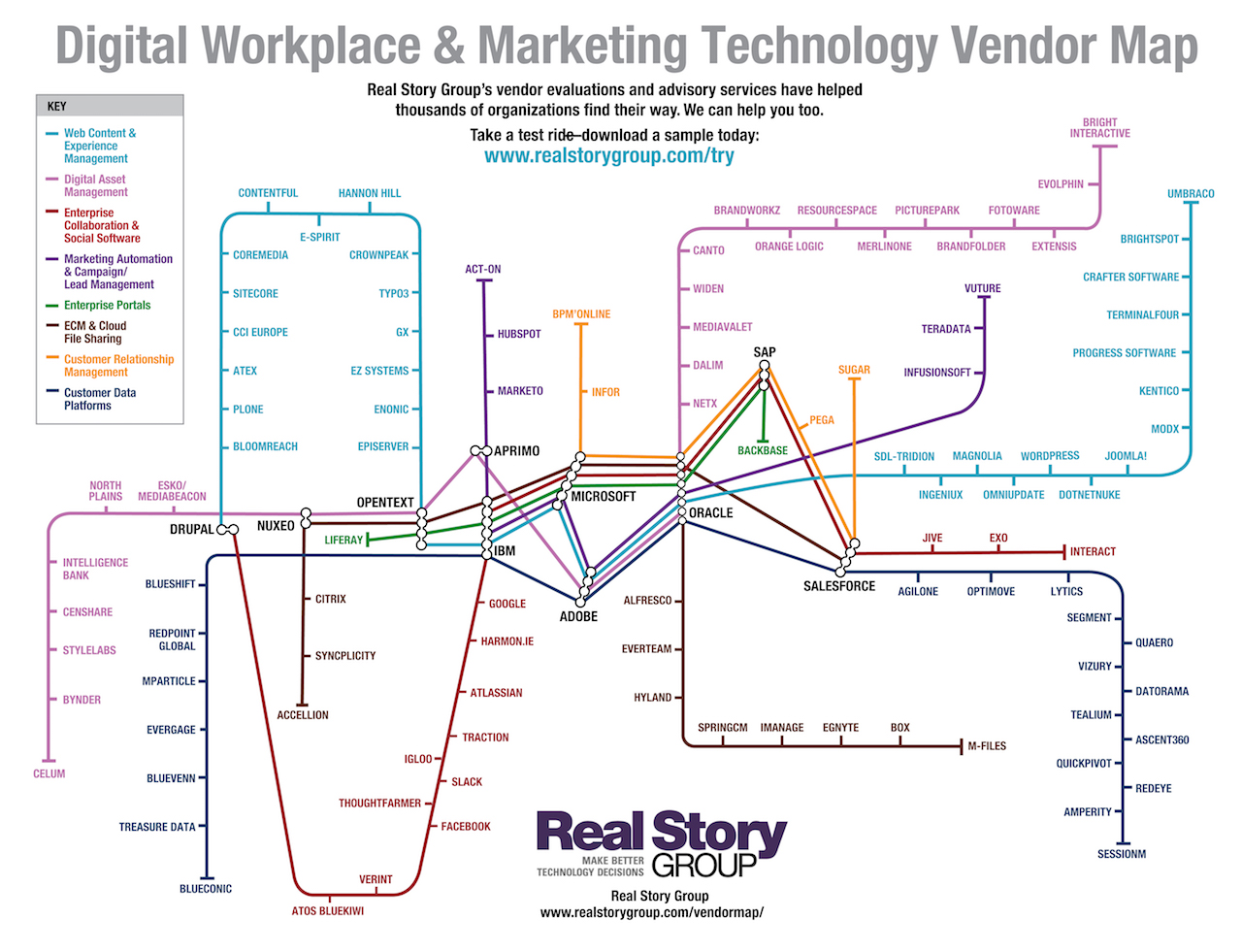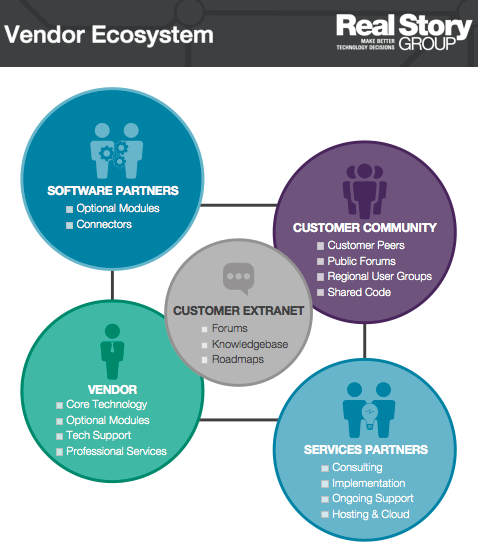Slack: The Real Story
At RSG, we have been covering the enterprise social-collaboration software market for more than a decade now. Compared to other technologies we cover, the tools in the social-collaboration segment are not considered sexy. Useful, definitely yes, but sexy? SharePoint? No.
Slack Is Sexy
Slack, a team chat tool for enterprise workers, is an outlier. Both the tech press and mainstream publications have gushed over this tool as if it were the next best thing since sliced bread. This stems partly from the company's PR savvy, helped along by the media zeitgeist of fawning over so-called unicorns (loosely, unprofitable start-ups but valued at more than a billion dollars by their venture capitalist backers). Slack also gets a lot of push from highly visible thought-leaders at interactive agencies -- a key user segment for the tool.
The hype is definitely yuuuuge.... not only are many enterprise leaders curious about Slack but some may even have contracted FOMO (fear of missing out).
A No-Hype Approach
Our recent in-depth evaluation of Slack (available to RSG subscribers) is not so starry-eyed. Slack is definitely useful for certain use cases in some enterprise settings but in relation to its utility, Slack is one of the more hyped vendors in the enterprise software space.
Consider Slack's market penetration in relation to a few collaboration software vendors. I also include Microsoft Exchange here as Slack is often (but incorrectly) thought of as an email-killer.

Figure: Estimated user base of select collaboration tools. Source: Company reports and RSG estimates.
Firstly, the number of MS-Exchange users is towering at an estimated 350 million (and on top of that there are other incumbents like IBM Notes). It is a bit ironic that the tech press lauds start up biz models based on network effects but seems to forget the network effects of email when writing about email-killer tools. True, email has its issues (and most of us have our own email peeves and headaches) but realistically speaking, a chat tool can never hope to replace email as the primary enterprise communication tool.
Not surprisingly, though, email vendors have also updated their platforms in response to user expectations and changes in communication behaviors (e.g. Google Inbox, IBM Verse).
High Growth, But from a Small Base
A big part of Slack halo is the rapid-growth numbers it shows off. The growth numbers may look impressive but the above graph should make it clear that they are starting from a small-base and have a long way to go.
The current buzz around Slack is reminiscent of the glory days of Yammer. After a heady growth period (and popularizing the freemium model and getting acquired by Microsoft), usage has peaked at about 10-15 million users. The trajectory for enterprise social network tools such as Chatter and tibbr has been similar after a rapid-growth phase. IBM Connections and Jive software grew rapidly to about 20 million subscribers and seem to have achieved steady state. Yes, these are not chat tools per se but (in addition to providing several collaboration-oriented functionality) they were also aiming to wean employees away from email.
What Enterprise Means
When it tries to expand beyond its current (enthusiastic and vocal) user base of startups and small teams, Slack will find that enterprise collaboration is a different ball game altogether. Enterprise considerations revolve around scalability, deployment architectures, integration with existing stacks, fine-grained administrative controls, records management and archival needs -- all areas in which Slack is yet to prove itself. For example, Uber, LinkedIn, and Twitter are said to have dropped plans for enterprise-wide use of Slack.
In the end, real-time group messaging has its place among enterprise collaboration use cases, but it is still one among the several applications that your organization requires. In the group chat space itself, remember that you have alternatives (e.g., Atlassian and Microsoft Skype), who may understand key enterprise issues and requirements through their long experience in large-scale deployments.







